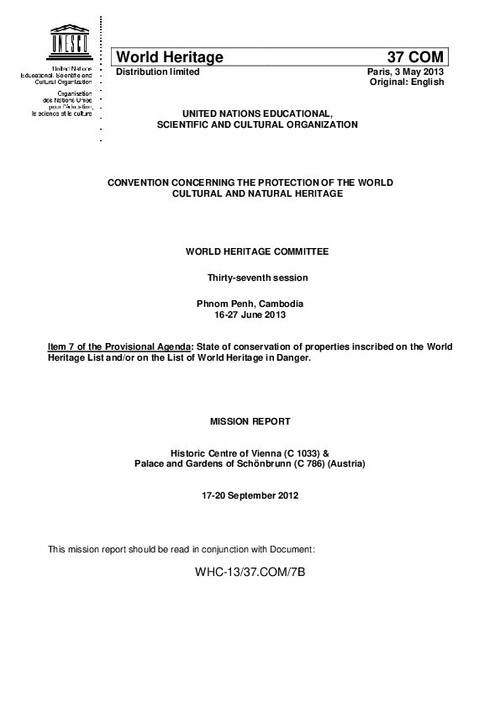Report of the UNESCO-ICOMOS Reactive Monitoring Mission to the Historic Centre of Vienna and Palace and Gardens of Schönbrunn, 17-20 September 2012
Report of the UNESCO-ICOMOS Reactive Monitoring Mission to the Historic Centre of Vienna and Palace and Gardens of Schönbrunn, 17-20 September 2012
Thursday, 20 September 2012
The mission assessed the overall state of conservation of the World Heritage properties “Palace and Gardens of Schönbrunn”, inscribed on the World Heritage List under criteria (i) and (iv), and the “Historic Centre of Vienna”, inscribed on the World Heritage List under criteria (ii) and (iv), in relation to development pressures, visual impacts on the setting, as well as the densification and modernization of the historic fabric, all of which have been repeatedly identified as the key factors impacting the properties’ authenticity and integrity.
The mission confirmed that the developments around the new Vienna Main Station will no doubt have an adverse impact on the visual context of the immediate and wider neighbourhood. Even after the reduction in height and partial relocation of the proposed high-rise buildings, it can still be said that this ensemble of new constructions considerably changes this part of Vienna.
These changes will be also visible from the Upper Belvedere Castle in the direction of the Main Station area. However, the views before development were already not identical to the historic view, no longer showing an originally hilly landscape.
After the new constructions, the view will differ from what was there previously, but the mission did not consider that the changes would be highly detrimental. The potential impact was evaluated during the mission from each of the key viewpoints identified by previous missions. The mission considered that if the development projects were realised with all changes proposed by the State Party based on impact assessments, new additional negative impacts could be avoided.
UNESCO; ICOMOS
